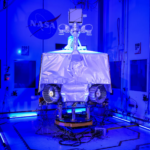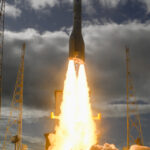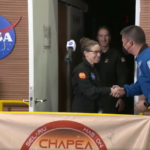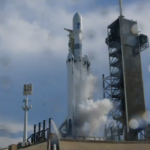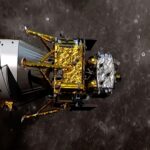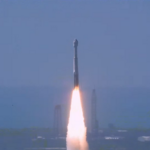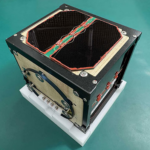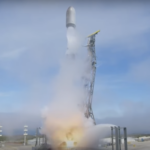Browse Resources by Topic
- Economy (484)
- Annual Economy Overviews (22)
- Commercial Infrastructure and Support Industries (98)
- Commercial Space Products and Services (83)
- Government Space Budgets (247)
- Additional Country Space Budgets (12)
- Annual Government Space Budgets Global Overview (17)
- Brazilian Government Space Budget (15)
- Canadian Government Space Budget (15)
- Chinese Government Space Budget (16)
- European Cooperative Organization and Government Space Budgets (90)
- Annual European Cooperative Organization and Government Space Budgets Overviews (7)
- EUMETSAT Space Budget (11)
- European Commission Space Budget (12)
- European Military Space Budgets (4)
- European Space Agency Budget (15)
- French Government Space Budget (13)
- German Government Space Budget (15)
- Italian Government Space Budget (14)
- Spanish Government Space Budget (13)
- United Kingdom Government Space Budget (14)
- Indian Government Space Budget (16)
- Israeli Government Space Budget (13)
- Japanese Government Space Budget (16)
- Russian Government Space Budget (14)
- South Korean Government Space Budget (14)
- United States Government Space Budget (54)
- New Nations (2)
- Venture Capital and Investment (4)
- Education (44)
- Post-secondary STEM Education (9)
- U.S. Trends (7)
- Primary and Secondary STEM Education (13)
- Global Trends (6)
- U.S. Trends (5)
- NAEP (4)
- Top-level trends (7)
- Post-secondary STEM Education (9)
- Infrastructure (650)
- Annual Infrastructure Overviews (5)
- Astrophysics (3)
- Communications Satellites (52)
- Earth Observation/Remote Sensing Satellites (51)
- Ground Networks (5)
- Satellite Design (36)
- Human Activities in Space (48)
- Human Settlements (2)
- Space Stations (43)
- Bigelow (12)
- China (8)
- ISS (17)
- Space Station Deployments Log (2)
- Launch (218)
- Current Launch Activity Lists (6)
- Human Space Launch (57)
- Orbital Human Space Launch (39)
- Suborbital (14)
- Launch Support (45)
- Spaceports (44)
- Chinese Spaceports (6)
- European Spaceports (3)
- Indian Spaceports (4)
- Japanese Spaceports (2)
- Other Country Spaceports (3)
- Russian Spaceports (9)
- U.S. Spaceports (10)
- Spaceports (44)
- Payload Launch (113)
- Orbital Payload Launch (90)
- Suborbital Payload Launch (18)
- Missiles (3)
- Sounding Rockets (6)
- Missile Detection Satellites (17)
- Planetary Science (22)
- Landers/Rovers (8)
- Probes (6)
- Positioning, Navigation, and Timing (PNT) Satellites (84)
- Satellites (38)
- Ground Networks (7)
- Orbits (11)
- Satellite Design (4)
- Solar Science (4)
- Ground Facilities (1)
- Orbital Systems (3)
- Space Situational Awareness Satellites (40)
- Technology Development (11)
- Orbits (1)
- Satellite Design (8)
- Interactive Tables and Charts (248)
- Data Economy (62)
- Data Infrastructure (115)
- Data Investment (17)
- Data Workforce (53)
- Space Products & Innovation (415)
- Annual Overviews (15)
- Energy, Resources, and Environmental Management (62)
- Featured Stories (24)
- Governance, Education, and Infrastructure (67)
- Homeland Security, Defense, and Intelligence (47)
- Interactions Between Space and Non-Space (9)
- Retail, Finance, and Corporate Services (36)
- Science, Biotechnology, and Health Care (69)
- Space Technology Hall of Fame and Space Certification (14)
- Transportation, Logistics, and Manufacturing (66)
- Travel, Lifestyle, and Entertainment (53)
- Workforce (169)
After $450 million and six years of work, NASA will not be exploring lunar ice with its new rover. The Volatiles Investigating Polar Exploration Rover (VIPER) is already built, and the rocket is still scheduled to launch next year, but the rover will remain on Earth.
Read MoreBoeing Starliner Commercial Crew Module deemed safe to return astronauts to Earth for emergency return as engineers diagnose anomalies.
Read MoreAriane 6, the launch vehicle designed to ensure the European Space Agency’s access to orbit, flew from French Guiana on Tuesday, ending four years of delays with triumph.
Read MoreAfter 378 days, the CHAPEA crew emerged from its Mars Simulation at NASA’s Johnson Space Center.
Read MoreSpaceX is expanding its facility and renewing its lease at the Port of Long Beach to support an increased launch cadence out of Vandenberg Space Force Base.
Read MoreNOAA’s GOES-U satellite, the most advanced weather fleet sent to orbit by the United States, carries the nation’s first operational coronagraph.
Read MoreChina’s Chang’e 6 spacecraft landed on the far side of the Moon on June 1, and returned the samples to Earth on June 25.
Read MoreBoeing’s Starliner spacecraft launched from Cape Canaveral with astronauts onboard for the first time. With this success, Starliner is poised to be only the second commercial crewed vehicle that is certified to bring astronauts to the ISS.
Read MoreA Japanese university and lumber company are working together to send the first wooden satellite to the International Space station later this year.
Read MoreThe 50th SpaceX Falcon 9 mission of the year launched successfully May 14 from Vandenberg Space Force Base in California. The launch makes 2024 the third consecutive year the space company has achieved at least 50 annual launches.
Read More
